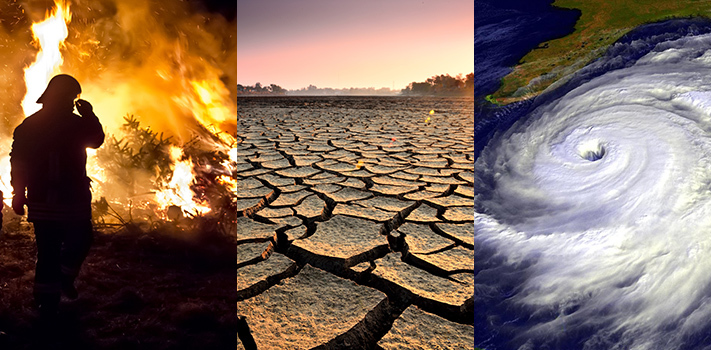
The urgency underlying last Friday’s global climate strike was clear; we’re running out of time to save our planet. And while it’s true that there is still time to change course, global warming is already reshaping all sorts of places around the globe. Several examples illustrate the breadth of these changes, though the list is not exhaustive.
- Although natural disasters are inevitable, global warming makes them worse and more frequent. Rising temperatures increase the intensity and frequency of storms and floods, threatening to make the damage that Dorian caused routine. Global warming also prolongs and intensifies forest fires, irreparably damaging ecosystems from the Amazon to Yosemite.
- Global warming is also hurting animals directly. The Great Barrier Reef and other marine ecosystems around the world are suffering because of rising temperatures, animals are changing their breeding and migration schedules, and arctic animals are experiencing shorter hibernations and longer, physically exhausting swims as the ice sheets melt.
- And it’s not just animals and ecosystems, though they’re vitally important. Global warming is also threatening agricultural crop yields, polluting air, and threatening infrastructure (train tracks in Europe recently buckled during the record-setting heat wave).
And that’s just the tip of the iceberg. In the not-to-distant future, island nations will sink, coastal cities will flood and become unlivable, and the subsequent wave of climate refugees will strain our already strained food supply, leading to resources shortages and potentially war.
The science is clear; global warming is reshaping place as we know it. Without meaningful action, the places that we, and animals, call home will no longer exist. The places and infrastructure that we rely on to keep society functioning will no longer exist. And the places that are crucial to the functioning of our planet, like the Amazon, will no longer function as needed.
The result? Not just a conceptual reshaping of place, but the total elimination of many places. Eventually, unless we start making real change soon, the place we all call home, Planet Earth, will meet the same fate.
Sources:
https://www.ucsusa.org/global-warming/science-and-impacts/impacts/global-warming-and-wildfire.html
https://www.cnn.com/2018/04/18/world/great-barrier-reef-coral-dying-climate-change/index.html
https://www.livescience.com/23026-global-warming-changing-world.html
https://www.edf.org/climate/how-climate-change-plunders-planet

This post is both unsettling but also very important in understanding the crisis that is at stake. I remember when my parents took my sister on a vacation to visit New Orleans, South Carolina and Mississippi they told us they had decided on these places as our summer vacation because by the time we were adults with our families all of these places may be under water and not even exist anymore.
https://www.usatoday.com/story/money/2019/06/18/climate-change-american-cities-that-will-soon-be-under-water/39533119/. This article I found supports the ideas you brought up and is extremely eyeopening. It lists 35 cities within the US itself and many statistics including one about the percent of habitable land that will be underwater by 2060 and 2100. It is a startling fact to realize that by the time our great grandkids are born much of the United States and places we know may not even exist anymore.
I think it was a very interesting approach to look at global warming through the concept of place. I think talking about place and peoples homes and the threats to the things that mean most to them is often the best way to reach them and make them act.
https://climatecommunication.yale.edu/visualizations-data/ycom-us/ This interactive map shows that many of the places that are effected by global warming understand its threat and the threat to future generations. This makes sense as they have already experienced that threat to their sense of place and the places they call home and value. However, it seems that parts of the US that don’t understand the threat as much haven’t experienced the threat as first hand.
I am wondering how you could use this approach of place and threat to place, that is so powerful, to reach the people that feel safe and feel no threat to the places they have established as home.
Thank you for this post! The focus on how global warming can lead to the erasure of certain places is an important point that isn’t brought up as often as it should. Global warming will displace people, however will climate refugees be able to move to places less vulnerable to climate change?
Migration, especially long-distance migration, is a costly process that requires time, money, and resources that those living in extreme poverty do not have. In the face of extreme events, the most common form of migration undertaken by impoverished communities is short-distance and temporary. People with minimal resources are also as likely to move to places that are just as vulnerable to global warming as the place they lived in before. In Bangladesh, because rural migrants to urban cities had difficulty with the process due to limited skills and an increase in living expenses they were relegated to the slums. This did not increase their source of income or resilience to the changing environment.
Climate change will displace people. However, the places people migrate to will depend on their level of income. Will states provide resources to impoverished communities to maintain their resilience? As global warning continues to reshape the places we live in, how will those most vulnerable to climate change adapt to this change?